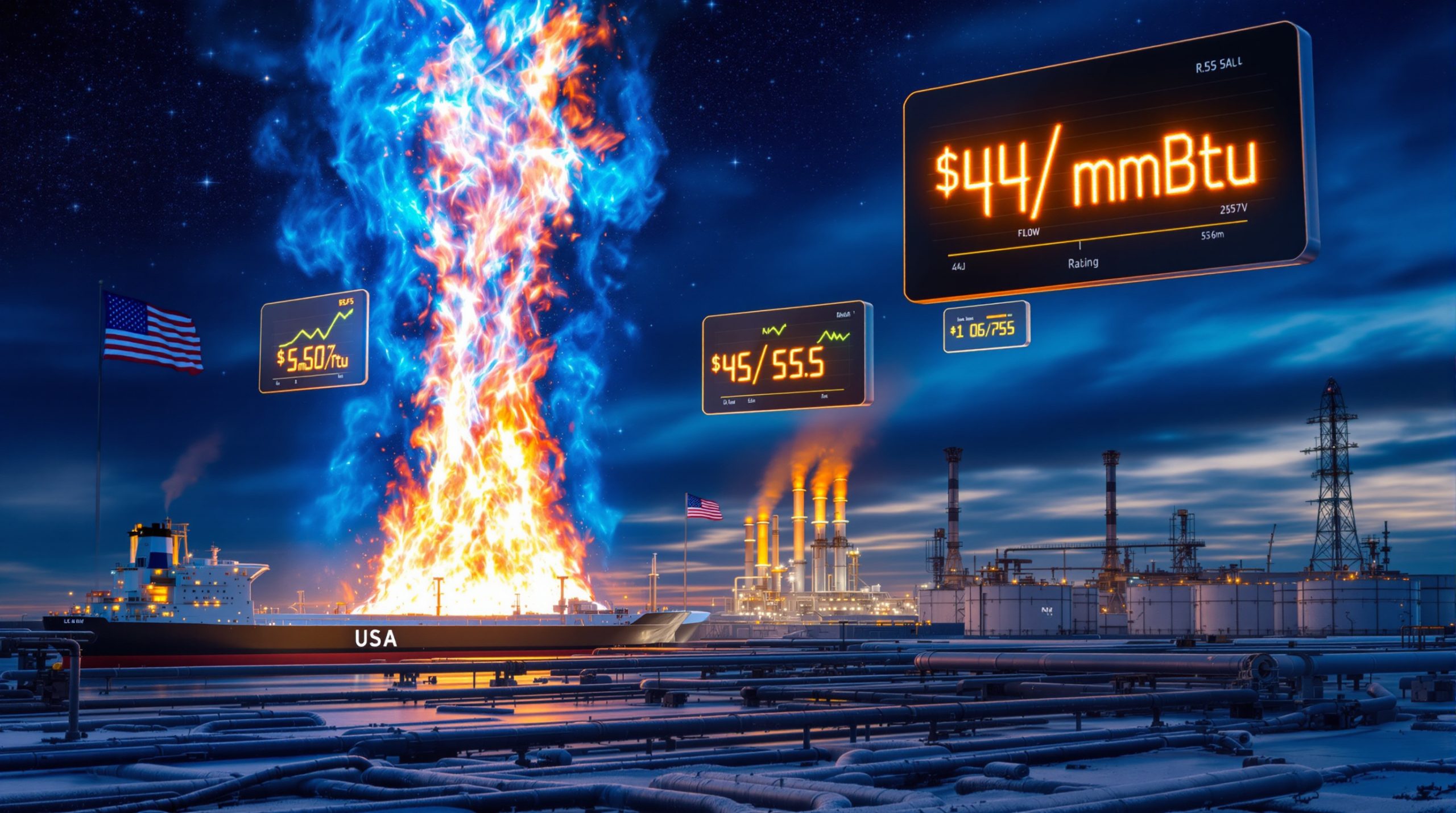What Is a Sovereign Debt Crisis and Why Does It Matter Now?
A sovereign debt crisis occurs when a country struggles to meet its financial obligations, potentially leading to currency devaluation and economic instability. Historical examples like Germany from 1917-1923 demonstrate how quickly inflation can spiral out of control—starting at 15%, then jumping to 30%, 300%, and eventually reaching a staggering 30,000%. This catastrophic hyperinflation erased savings and destabilized German society, with prices doubling approximately every 3.7 days by 1923.
Modern parallels exist in countries like the United States, which has run significant annual deficits for over five decades since abandoning the gold standard. This has resulted in an accumulated national debt exceeding $34 trillion. The response from central banks—monetizing this debt through various mechanisms—mirrors historical precedents that ultimately risked a complete loss of monetary credibility.
Understanding Sovereign Debt Crises Through History
When examining sovereign debt crises historically, we find a recurring pattern: governments unable to service their obligations trigger currency collapse followed by rapid inflation. The Weimar Republic's hyperinflation stands as perhaps the most striking example, but it's far from the only one. Zimbabwe's more recent experience saw inflation rates exceeding 79 billion percent, effectively destroying the currency.
What makes today's situation particularly concerning is the global scale. Unlike regional crises of the past, current US inflation and debt problems affect most major economies simultaneously, limiting the traditional escape routes nations have used to navigate past challenges.
The Breaking of the Global Financial Ecosystem
The post-Bretton Woods financial system relies heavily on recycling deficits into U.S. assets, which has suppressed interest rates and inflated equity valuations artificially. This circular flow of money across international borders has created distortions throughout the global economy.
Approximately 90% of market activity today is driven by passive investing and quantitative algorithms rather than fundamental analysis. This has decoupled prices from their underlying economic reality. Tesla provides a striking example—its stock rose despite reporting a 19% revenue decline and 72% profit drop in Q1 2024.
This "broken ecosystem" prioritizes liquidity over actual value, creating dangerous asset bubbles across stocks, bonds, and real estate markets. Price discovery mechanisms have deteriorated to the point where assets frequently trade at values completely disconnected from their underlying worth.
How Is the Sovereign Debt Crisis Affecting Precious Metals?
Gold's Dramatic Price Movement
Gold has demonstrated remarkable strength, climbing from approximately $2,600 in Q4 2023 to around $3,300 in recent months—a nearly 27% increase. This upward trajectory reflects growing concerns about currency stability and sovereign debt sustainability.
Historically, gold has performed exceptionally well during debt crises, as seen in the 2008-2011 period when prices rose 150%. The current rally signals growing anticipation of further monetary debasement, particularly as countries like the United States debate implementing tariffs exceeding 100% on Chinese imports, which could significantly exacerbate inflation.
Gold's performance during periods of negative real interest rates (when inflation exceeds nominal interest rates) has been consistently strong. This relationship explains much of its current momentum as real yields turn increasingly negative in many developed economies. Recent gold price analysis suggests this trend could continue well into 2025.
The Delayed Reaction in Mining Stocks
Despite gold's impressive performance, many gold mining stocks haven't yet fully reflected this price movement. Companies like New Gold (NGD) have surged 19% after releasing earnings reports, yet sector-wide valuations still lag bullion prices significantly.
This disconnect stems primarily from passive funds' reliance on trailing metrics, which delays price discovery until quarterly reports confirm higher profit margins. When a mining company's operating costs remain relatively fixed while the gold price rises 20%, this can boost miners' earnings by 50-70% due to operational leverage.
The lag between metal price increases and corresponding mining stock movements creates a timing advantage for informed investors who understand this cyclical pattern. Many analysts now believe undervalued gold stocks will see significant price adjustments across the mining sector as earnings reports emerge throughout 2024.
Silver's Potential in the Current Environment
Silver presents a particularly compelling case due to its dual role as both a precious and industrial metal. Approximately 45% of silver demand comes from industrial applications like solar panels and electronics, providing a demand floor that gold lacks.
During the 1970s stagflation period, silver dramatically outpaced gold, with the gold/silver ratio peaking at 1:15 compared to today's approximate 1:80 ratio. This historical pattern suggests substantial upside potential for silver during periods of fiscal stress and currency devaluation.
Supply constraints further support the silver thesis—2023 saw a 40 million-ounce deficit between mine production and consumption. This fundamental supply/demand imbalance could amplify price gains as sovereign debt fears intensify.
Why Are Traditional Markets Failing to Function Properly?
The Disconnect Between Stock Prices and Fundamentals
The current market environment features numerous anomalies that signal severe dysfunction. Over 30% of Russell 3000 companies operate without profitability, yet equity indices hover near record levels. This contradicts traditional valuation models that connect stock prices to earnings power.
"Zombie companies" like Boeing, which hasn't generated a profit since 2018, continue receiving financing despite years of negative cash flow. This misallocation of capital mirrors Japan's 1990s crisis, where economically unviable firms survived via artificially cheap credit, ultimately stifling productivity and innovation.
Traditional indicators of financial health no longer seem to matter. Companies with declining revenues and deteriorating profit margins frequently experience stock price increases following disappointing earnings reports—a phenomenon that would be impossible in a properly functioning market.
The Role of Central Banks in Market Distortion
Central banks collectively hold approximately $25 trillion in global assets, allowing them to manipulate interest rates to sustain unsustainable debt loads. This intervention has fundamentally altered market dynamics, creating an environment where governments effectively assume market risks rather than private investors.
Negative real interest rates—when nominal yields fall below inflation rates—make traditional bonds unattractive as stores of value. Zimbabwe's experience with 20% inflation versus 3% bond yields demonstrates how this dynamic forces capital into hard assets, further inflating commodity prices.
The unprecedented expansion of central bank balance sheets since 2008 has disconnected financial markets from economic reality. When central banks create trillions in new currency units without corresponding productivity gains, the result is asset price inflation without genuine economic prosperity.
What Are the Warning Signs of an Accelerating Crisis?
Supply Chain Disruptions as Economic Indicators
Recent data reveals concerning trends in global trade and logistics. Chinese imports to the United States reportedly fell by 60% in early 2024, potentially foreshadowing serious inventory shortages by mid-2024. This collapse in shipping volume significantly exceeds normal seasonal variations.
Domestic transportation metrics further confirm this troubling trend, with trucking and rail volumes declining 15% month-over-month in April 2024. These leading indicators suggest we could see empty retail shelves by July, echoing COVID-era bottlenecks but stemming from fundamentally different causes—declining consumer demand and escalating tariff conflicts.
The cascading effects throughout transportation networks often provide earlier warning signals than traditional economic indicators. When shipping companies report volume declines of this magnitude, it typically precedes broader economic contraction by 2-3 months.
The Tariff Impact on Inflation Expectations
The introduction of substantial tariffs (potentially 20-100% on certain goods) creates a problematic economic environment. Analysts estimate these measures could add 2-4% to the U.S. Consumer Price Index, potentially worsening an already challenging stagflationary environment.
Combined with real interest rates potentially reaching -6% (4% bond yields versus 10% actual inflation), investors increasingly seek precious metals as traditional financial assets deliver negative real returns. This flight to tangible assets accelerates as confidence in currency stability deteriorates.
Tariffs fundamentally represent a tax on consumption, reducing purchasing power for average consumers while simultaneously driving prices higher. The impact of tariffs creates ideal conditions for precious metals, which historically outperform during periods of declining real yields.
What Happens When Currencies Lose Credibility?
The Historical Pattern of Currency Collapse
During sovereign debt crises, central banks face a critical trilemma: print money (triggering hyperinflation), default on obligations (causing severe recession), or raise taxes dramatically (sparking social unrest). Throughout history, most governments have chosen the inflationary path as the politically expedient option.
Weimar Germany and modern Zimbabwe both opted for currency debasement, ultimately destroying citizens' savings. The United States faces similar risks as its debt-to-GDP ratio surpasses 120%, a level historically associated with diminished currency credibility and heightened default risk.
The psychological aspects of currency collapse often follow predictable patterns. Initial public confidence gives way to skepticism, followed by active avoidance of the currency, and finally complete abandonment. This process can accelerate rapidly once a tipping point is reached.
The Two Competing Economies
Today's economic landscape features two distinct and increasingly disconnected systems: the "financial economy" (stocks, bonds, derivatives) and the "real economy" (goods, services, labor). These systems now operate in opposition rather than harmony.
Central bank policies since 2009 have inflated financial assets (S&P 500 growing at 15% annually) while real wage growth has languished around 3%. This divergence explains much of the growing wealth inequality and political polarization observed in developed economies.
When monetary policy primarily benefits the financial economy at the expense of the real economy, the result is asset bubbles without corresponding productivity gains. This fundamental disconnect cannot persist indefinitely without eventually forcing a painful reconciliation.
How Can Investors Protect Themselves During a Sovereign Debt Crisis?
The Case for Precious Metals as Protection
Gold and silver have historically served as wealth preservation tools during currency crises precisely because they cannot be created through monetary policy. From 2000-2020, gold delivered average annual returns of 9.3%, outperforming both bonds and equities during this period.
Physical precious metals holdings avoid counterparty risk, which becomes critically important during periods of bank insolvencies or financial system stress. When financial assets represent promises to pay, tangible assets represent payment itself—a crucial distinction during crises.
The negative correlation between precious metals and real interest rates provides a mathematical foundation for their performance during sovereign debt crises. As real rates turn increasingly negative due to inflation outpacing nominal yields, gold as an inflation hedge typically appreciates significantly.
Mining Companies as Leveraged Exposure
Gold and silver mining stocks can offer amplified returns during precious metals bull markets due to operational leverage. For example, a 20% increase in gold prices can potentially double a miner's earnings, as demonstrated by Newmont's 2020 financial results.
Fixed operating costs create significant profit margin expansion when metal prices rise. A mine producing gold at $1,200 per ounce sees profit margins expand from $400 per ounce (at $1,600 gold) to $900 per ounce (at $2,100 gold)—a 125% increase in profitability from only a 31% rise in gold price.
Post-earnings rallies, such as New Gold's 19% jump after reporting results, highlight this dynamic relationship between metal prices and mining stock performance. As more miners report earnings throughout 2024, expect significant price adjustments across the sector.
Understanding Market Inefficiencies as Opportunities
The dominant role of passive investing creates substantial mispricings that informed investors can exploit. Index funds must follow strict allocation rules regardless of fundamental changes in business conditions, creating predictable buying and selling patterns.
Active traders who understand monetary dynamics can effectively front-run quarterly earnings reports, positioning themselves before algorithms react to the improved financial metrics. This timing advantage becomes particularly valuable during periods of rapidly changing metal prices.
The lag between metal price increases and stock price movements creates a window of opportunity for investors who recognize these patterns. By focusing on companies with the strongest operational leverage to rising metal prices, investors can potentially maximize returns during this transitional period.
What Could the End Game Look Like?
Resource Misallocation and Economic Consequences
Artificial interest rates have contributed to approximately $6 trillion in global "zombie debt"—financing that sustains economically unviable enterprises. This misallocation of capital stifles innovation and productivity by directing resources away from their most productive uses.
When governments manipulate markets and remove normal risk signals, resources become misallocated throughout the economy. Supply chains break down as price signals become distorted, leading to shortages in essential goods and services as producers respond to artificial incentives rather than genuine consumer demand.
Post-crisis resource reallocation, such as reshoring manufacturing capacity, could eventually restore economic equilibrium but requires significant political will and acceptance of short-term pain for long-term stability. This transition period typically involves higher unemployment and reduced living standards before economic health returns.
The Wealth Illusion vs. Real Production
A fundamental distinction exists between money printing (which creates currency but not wealth) and productive economic activity (which creates actual wealth). Since 2008, the Federal Reserve's balance sheet expanded by approximately 700%, yet GDP grew only 35%, highlighting this critical divergence.
True wealth creation requires productivity improvements, technological innovation, and capital formation directed toward economically viable activities. When monetary expansion substitutes for genuine economic growth, the result is asset price inflation without corresponding improvement in living standards.
This fundamental truth becomes increasingly apparent during the later stages of a sovereign debt crisis, as the gap between financial asset values and economic reality reaches unsustainable levels. The reconciliation between these competing realities often marks the climax of the crisis.
FAQ: Common Questions About Gold and Silver During Debt Crises
How high could gold and silver prices go during a sovereign debt crisis?
While specific price targets involve speculation, historical sovereign debt crises have seen precious metals prices increase by multiples of their pre-crisis values. Gold typically peaks at 3-5 times its pre-crisis levels, as observed during the 1970s and following the 2008 financial crisis.
A similar trajectory from recent $2,600 prices could theoretically target $7,800-$13,000 range. For silver, a reversion to historical gold-to-silver ratios around 1:30 (versus today's 1:80) would imply approximately $260 silver at $7,800 gold.
The critical factor isn't nominal price but purchasing power relative to essential goods and services. During past crises, one ounce of gold has typically maintained its ability to purchase a high-quality man's suit—a relationship that has held remarkably steady for centuries.
Why haven't gold mining stocks kept pace with gold's price increase?
The disconnect stems largely from today's passive market structure. With approximately 90% of market activity driven by algorithms and index funds, price discovery becomes significantly delayed until quarterly earnings reports definitively demonstrate the impact of higher metal prices on profitability.
Passive investment vehicles don't proactively "read the news" or adjust to changing economic conditions until these changes appear in trailing financial metrics. This creates systematic inefficiencies that informed investors can potentially exploit.
Mining stocks often experience significant rerating periods once earnings reports confirm operational leverage to higher metal prices. This pattern creates an opportunity for investors who position themselves before these quarterly catalysts materialize.
What warning signs should investors watch for as the crisis accelerates?
Key indicators include shipping and logistics data, retail inventory levels, real interest rates (nominal rates minus inflation), and central bank gold purchases (which reached 1,136 tonnes in 2023, a multi-decade high).
The velocity of change in these metrics often matters more than absolute levels. Rapid deterioration in shipping volumes or sudden increases in central bank gold purchases typically signal accelerating stress in the financial system.
Bond market behavior, particularly yield curve inversions and widening credit spreads, also provides valuable early warning signals. When the cost of insuring against sovereign defaults rises dramatically, precious metals typically experience corresponding price appreciation.
How do tariffs impact precious metals prices?
Tariffs typically create inflationary pressure by increasing imported goods costs while simultaneously widening trade deficits. These twin impacts—higher inflation and larger deficits—represent key drivers of gold demand.
When tariffs reach the 20-100% levels currently being discussed, they effectively function as a consumption tax that reduces purchasing power while driving prices higher. This stagflationary environment historically favors precious metals over financial assets.
Tariffs also accelerate deglobalization trends, potentially increasing manufacturing costs as production shifts to higher-cost regions. This structural inflation further supports the case for precious metals as inflation hedges during periods of economic realignment.
The sovereign debt crisis represents a systemic challenge to the post-1971 fiat monetary system. As policymakers confront growing insolvency, gold and silver will likely reassert their historical role as monetary anchors. Investors who recognize these dynamics early may successfully navigate the coming recalibration while preserving purchasing power through what promises to be a turbulent transition period.
Ready to Protect Your Wealth During the Sovereign Debt Crisis?
Discover how to safeguard your investments against currency devaluation and economic instability with real-time alerts on significant mining opportunities powered by Discovery Alert's proprietary Discovery IQ model. Explore why major mineral discoveries can lead to substantial returns during economic uncertainty by visiting the dedicated discoveries page.




